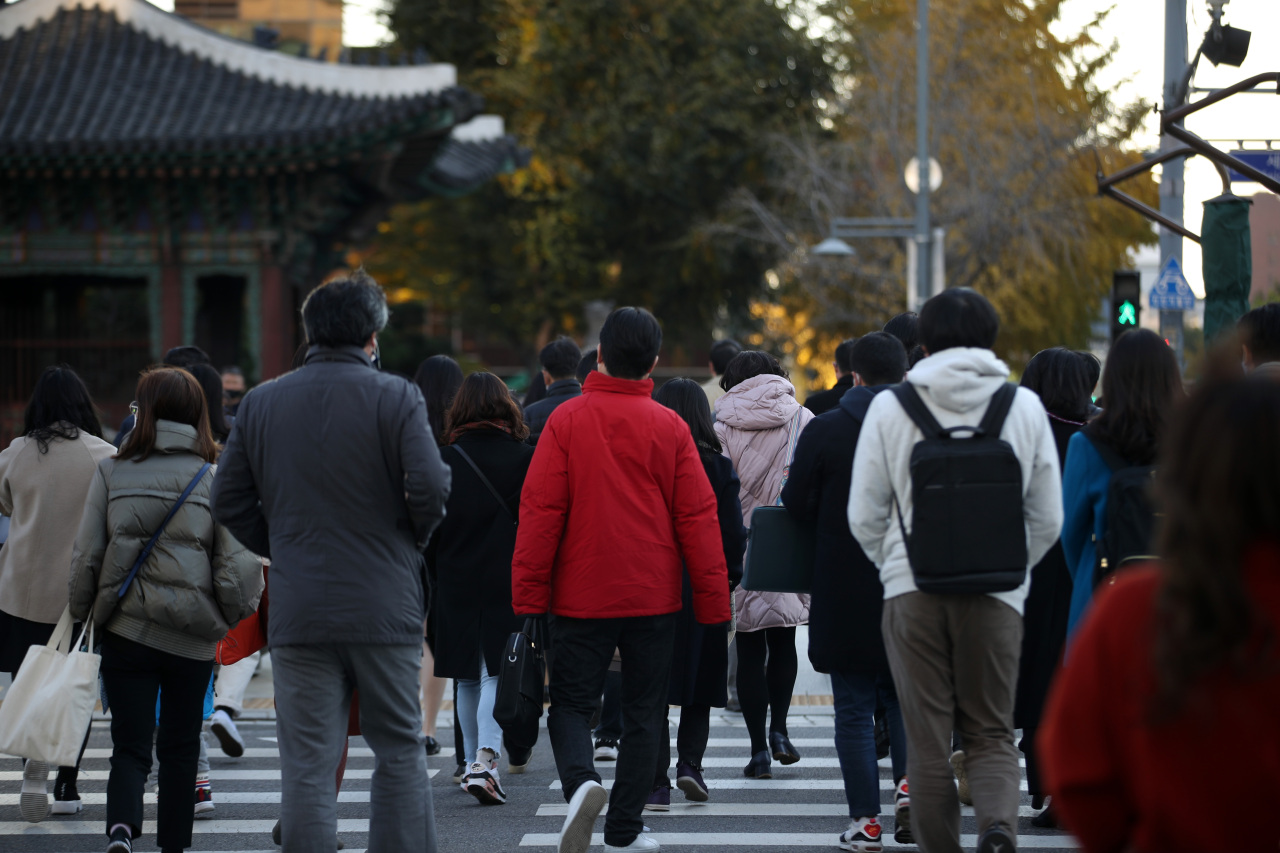Bleak coronavirus winter projected as controls ease and cases rise
By Kim ArinPublished : Nov. 13, 2020 - 17:24

Health experts once again urged people to continue exercising precaution on Friday as the number of daily new infections marked its highest tally since early September.
Korea on Thursday performed 11,639 tests and confirmed 191 more cases -- 162 locally transmitted and 29 imported -- which translates to a positivity rate of 1.64. In the past week, Korea did 10,728 tests and detected 134 cases a day on average. The cumulative number of official cases is 28,133.
Seoul continues to claim the highest proportion of daily new local cases, recording 74 on Thursday. The country’s initial epicenter Daegu reported only one case on the same day. With 6,088, the capital city now accounts for over one fifth of the nationwide total.
The number of infections found among international arrivals reached 4,036. Imported cases make up 22.9 percent of 939 cases reported in the last seven days.
One more person died in the past day. So far, 488 people have lost their lives to the disease domestically. The fatality rate stands at 1.73 percent. For those aged 80 or older, the rate is much higher at 20.2 percent.
Infectious disease specialist Dr. Choi Won-suk of Korea University Medical Center in Ansan, Gyeonggi Province, said the least restrictive social distancing tier that is currently being imposed should not be interpreted as a sign that coronavirus risks having somehow subsided.
“Even as authorities permit a resumption of most social activities, people need to double down on the basics of face mask wearing, hand washing and physical distancing,” he said.
Another infectious disease specialist Dr. Kim Woo-joo, also at Korea University hospital in Guro, southern Seoul, said distancing has to be practiced at home between family members as well.
“Home is where close contacts most frequently occur. If you live with someone who is more vulnerable to complications from coronavirus, you must not only limit outings where you can but also physically distance yourself at home,” he said.
Pulmonologist Dr. Chun Eun-mi of western Seoul’s Ewha University Medical Center said stricter restrictions need to be maintained at least through the winter when respiratory illnesses are more common.
“Cases will inevitably flare up again as we resume normal activities,” she said. By lifting most measures, Korea might be positioning itself poorly as colder months arrive, she warned.
Chun complained that Korea was not running enough tests to match the scale of the community spread here. “The coronavirus tally is the number of cases that we managed to discover, not the actual number of infections that are out there,” she said.
Since adopting the new and relaxed social distancing guidance last week, local governments across the country have reverted to tighter tiers following outbreaks.
Gwangju is closing down nightlife establishments after contact tracing revealed a sex worker infected two of her colleagues and at least three customers. The municipal authorities have quarantined 56 workers and visitors to the brothel so far. Back in August, the South Jeolla Province city had to reverse reopening after 28 sex workers and customers at a bar tested positive for the disease.
Another pulmonologist Dr. Jung Ki-suck, who led the Korea Disease Control and Prevention Agency in 2016-17, said Korea must ramp up efforts now to avoid a potential winter wave.
“Cold, dry air will create prime conditions for coronavirus spread. As temperatures drop, people will be forced to congregate indoors, making it harder for them to stay socially distanced,” he said.
By Kim Arin (arin@heraldcorp.com)








![[Graphic News] More Koreans say they plan long-distance trips this year](http://res.heraldm.com/phpwas/restmb_idxmake.php?idx=644&simg=/content/image/2024/04/17/20240417050828_0.gif&u=)
![[KH Explains] Hyundai's full hybrid edge to pay off amid slow transition to pure EVs](http://res.heraldm.com/phpwas/restmb_idxmake.php?idx=644&simg=/content/image/2024/04/18/20240418050645_0.jpg&u=20240419100350)








![[KH Explains] Hyundai's full hybrid edge to pay off amid slow transition to pure EVs](http://res.heraldm.com/phpwas/restmb_idxmake.php?idx=652&simg=/content/image/2024/04/18/20240418050645_0.jpg&u=20240419100350)

![[Today’s K-pop] Illit drops debut single remix](http://res.heraldm.com/phpwas/restmb_idxmake.php?idx=642&simg=/content/image/2024/04/19/20240419050612_0.jpg&u=)